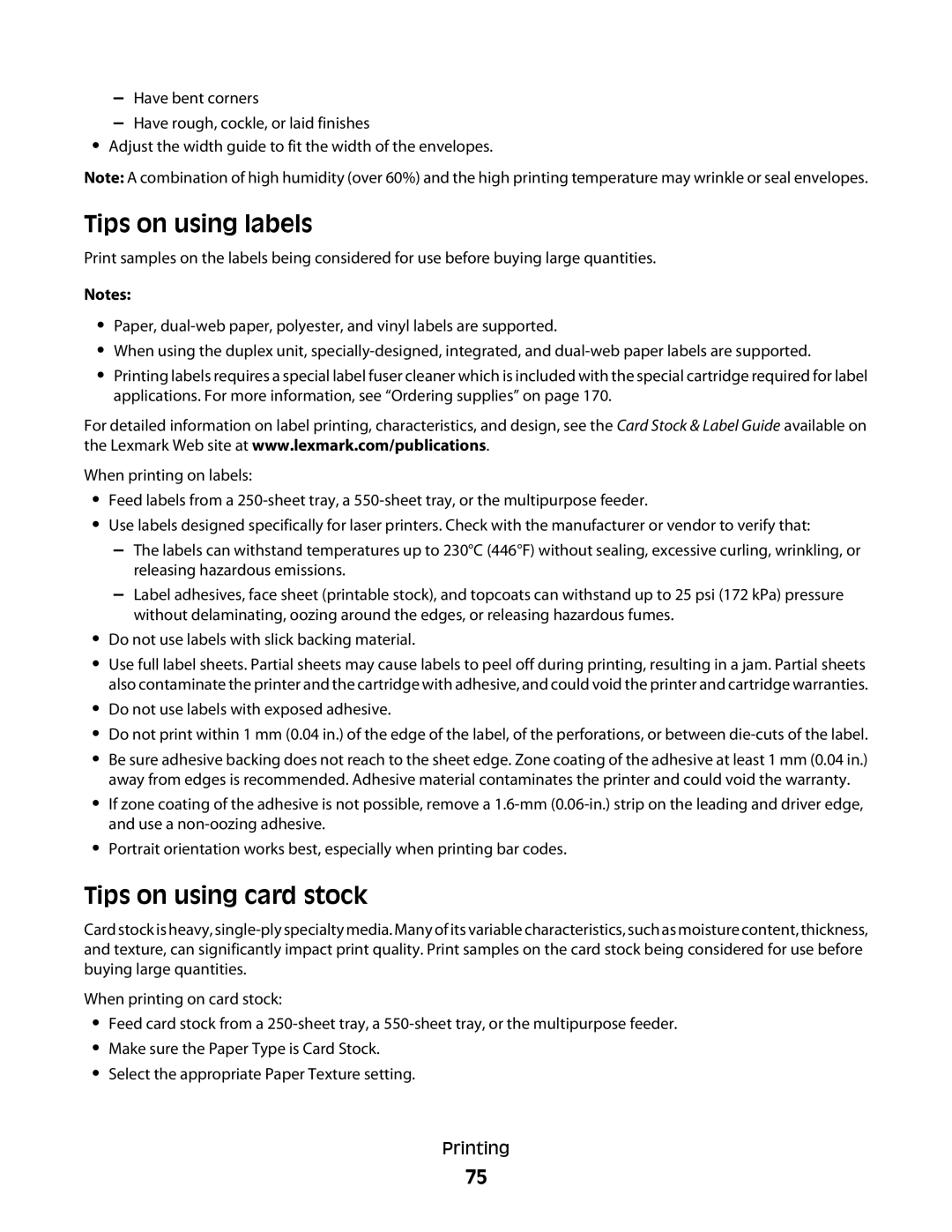T650n, 652dn, 30G0108, 654n, 30G0300 specifications
The Lexmark 30G0210 is a robust and highly efficient printing solution designed for businesses seeking high-volume printing capabilities. This printer is notable for its impressive speed and exceptional print quality, making it an ideal choice for environments where productivity is paramount. One of the standout features of this model is its ability to handle a range of media sizes, from standard letter-sized documents to larger formats, allowing for versatility in printing tasks.The Lexmark 654dn printer is another prominent model in this lineup, known for its advanced features and reliable performance. It stands out with its dual-sided printing capability, significantly reducing paper usage and costs. Additionally, the printer is equipped with a powerful processor and ample memory, enabling it to handle complex documents with ease. Its exceptional print resolution ensures that both text and images are sharp and vibrant. The Lexmark 654dn also supports a wide variety of connectivity options, including USB and network interfaces, making it easy to integrate into any office environment.
The Lexmark 30G2000 is designed with user convenience in mind. It comes with an intuitive control panel that simplifies the printing process, making it accessible for all users regardless of technical expertise. This model supports mobile printing technologies, allowing users to print directly from their smartphones and tablets, enhancing convenience in busy office settings.
The Lexmark 30G0200, on the other hand, is seen as an economical choice, delivering quality prints without the burden of high operating costs. It provides a balance between performance and affordability, making it suitable for small to medium-sized enterprises that require reliable printing without sacrificing quality.
The Lexmark 652dtn, a model in the same series, brings forward additional features such as enhanced security protocols to protect sensitive business information. This is increasingly important in today’s digital landscape, where data breaches can have significant ramifications. The printer also offers an intuitive workflow through its user-friendly interface, allowing staff to manage printing tasks efficiently.
Overall, the Lexmark 30G0210, 654dn, 30G2000, 30G0200, and 652dtn collectively represent a solid choice for businesses looking to enhance their printing capabilities. Their combination of speed, quality, and user-friendly features ensures that they meet the diverse needs of modern businesses while helping to improve overall productivity.
